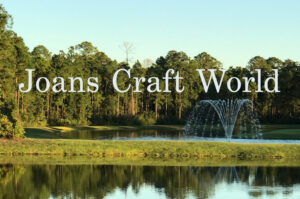Tips for the Beginner and the Advanced Scrapbooker
Welcome to Your World of Scrapbooking!
As you already know, Scrapbooking is the best way to preserve your family’s photos, memorabilia and stories. Plus, you get to show your creative side by designing a Scrapbook for a particular event in your life.
When it comes to Scrapbooking, having your own flare, style, and originality is a must. There are tons of books and magazines to give you ideas but you need to find your own personality when it comes to Scrapbooking. The magazine may have the coolest layout but the color scheme is orange and you really dislike that color, so why would you use it in your scrapbook that you will be looking at for years, use the colors that you like. Remember, putting these memories together in a scrapbook is an extension of you.
Here are just some tips to help keep your creative juices flowing.
1. Make it personal: Include journaling on your layouts to tell about the photographs and help you remember what was going on during that time period. It helps make your page more that just an old fashion photo album, the kind that the pictures stick and covered by a piece of plastic.
2. When Journaling, use your own handwriting when possible (even if you don’t like the way you write). Down the road when people are looking at you scrapbook it will have a true piece of YOU incorporated into it. Wouldn’t you like to see what your grandma/grandpa/aunt/uncle etc. handwriting looked like?
3. A quote says it all: Adding the perfect saying/quote to your page can capture the moment and help set the theme. Include a funny saying or quotes from you, a family member or even your child’s first words.
4. Add dimension: There are so many ways to add dimension to your layout now days. You can use various embellishments such as die cuts, chip board, brads, buttons, staples, fibers, the list goes on.
Here are a couple of examples.
a. If you have a die cut of a flower, you can add more dimensions by placing a button or brad in the center of the flower.
b. If you like using chip board lettering, you can add stickers to them; distress them by using sandpaper on the edges. They are usually thick enough so you may not want to add anymore height to them or you will have one chunky page.
c. Fibers – you can use fibers as a border to your page vs. stickers or paper. You can attach the fibers by brads or eyelets on each end. This is a really cool look.
5. Don’t stop with pictures: Pictures are only the beginning when it comes to Scrapbooking. You may have been at the zoo and your camera ran out of film or your batteries died, but you want to share that part in your vacation or travel scrapbook. This is where journaling comes into place. Tell a story of what happened at the zoo, you may have your ticket that got you into the zoo, put that on your page along with your memories. You can also Scrapbooking favorite family recipes, your child’s first drawing, or consider this, Scrapbooking your score card from your best golf game ever. It will be keepsake that everyone will cherish.
6. Keep your scraps from scrapping: Don’t throw out your paper scraps. You can use them to cut out shapes with hole punches, use them in die cutting machines, such as Sizzix, Quickutz, Cricut, etc. to make shapes, or trim them with decorative scissors to make cool borders, paper weaves or striping.
7. Tell a story: Scrapbook pages should tell a story. So remember to enhance the key photograph so that is becomes the focal point of your scrapbook page. If your photo is small it may get lost, to make sure that it doesn’t mat your small photos with a color that will compliment your theme. You can also use a larger mat for your smaller picture for you to embellish and journal on.
Scrapbooking is great way to share your memories with friends, families. It also looks a lot nicer than shoe boxes of pictures that you have on the top shelf of your closet.
Have a Great Day and don’t forget to leave time to Craft!









